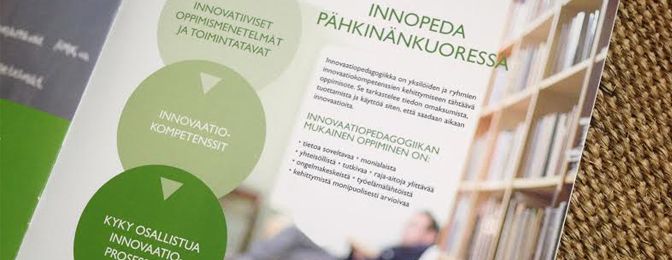
In innovation pedagogy, it’s okay to fail
TUAS accepted the challenge to get students to absorb, produce and use information in a way which creates innovations. This new approach to teaching is gaining more and more ground at TUAS. The word has travelled far and roused interest all the way to South America and Asia – export of education is the word of the day.
Text and photos: Sanna Rantanen and Michaela Tuomenoksa, students of journalism
On TUAS’ Project Hatchery course, all first-year students from different fields are mixed and groups are formed to implement commissions from external parties during the first autumn semester. The groups define their own goals and the ways to reach them. When people who study different fields work together, new ideas and solutions are created.
- We are in the process of introducing this to different fields of education and their studies. Teachers have the opportunity to combine innovation pedagogy with their teaching through their own creativity and enthusiasm – it suits all fields of education, says Sami Lyytinen, a member of the research group in Innovation Pedagogy.
- Teachers are yet to fully benefit the opportunities offered by innovation pedagogy, but its use is on the rise. Working with people from outside your own field should be considered an asset, says Lyytinen.
A key to creative and imaginative teaching
Innovation pedagogy allows doing things differently from the usual. Commissions from working life, problem-orientation, teamwork, internationality and working in networks and creating them are introduced to the students. In addition to the learning contents in the field, innovation competencies are included as competence goals: the skills, knowledge and attitudes required by innovation.
There is willingness to be flexible in terms of curricula and the students are included in the studies through different projects implemented by the research groups. In practice, innovation pedagogy is visible in the emphasis on interaction between the students, teachers and experts during the lessons. The studied topic is discussed, researched and approached from different points of view in the lessons, preferably so that the stimulus comes from an external commission.
- Studying takes place in groups and networks. Failure is accepted and even important. It is not sought after, but it is an opportunity for deep learning. The objective is to create and improve the abilities of students to act in innovation processes, says Sami Lyytinen.
Initially, at the beginning of the 21st century, innovation pedagogy answered to the need of working life to change the ways of action. Later it established its place as the strategic learning approach of Turku University of Applied Sciences. Over the time, it has roused interest outside TUAS and abroad.
A trip to Jakarta
With different projects and conferences, innovation pedagogy has also roused international interest. For example, last spring in Jakarta, Indonesia, a private university bought a week-long training package from TUAS. Last autumn, only a couple of months after the training, the university included a Project Hatchery course in its curriculum. According to the university, the attitude towards innovation pedagogy was at first doubtful, but now it is clear that a will to promote it exists.
In addition, the research group in innovation pedagogy has trained people in Poland and Brazil. Some messages of interest have also come from Peru.
- The popular learning approach will soon require that the research group gets more staff, Sami Lyytinen says and welcomes all teachers to boldly participate in innovation pedagogy.